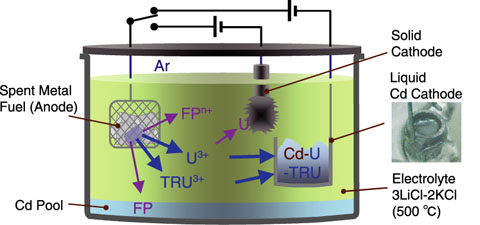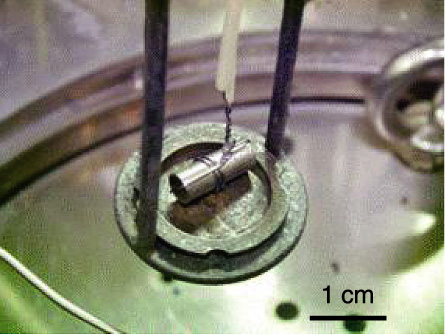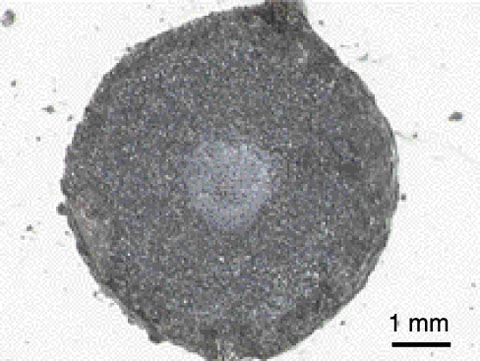
Fig.1-31 Concept underlying the electrorefining process

Fig.1-32 Appearance of U-Pu-Zr alloy before electrolysis

Fig.1-33 Cross section of anode after electrolysis
Metal fuel fast breeder reactor (FBR) technology is one of the future candidate technologies for the nuclear fuel cycle. For reprocessing the spent metallic fuel, pyrochemical reprocessing has been developed.
In pyrochemical reprocessing, transuranic elements (TRUs) such as uranium (U) and plutonium (Pu) are recovered by electrolysis. Fig.1-31 shows the concept underlying electrolysis for the separation of U, Pu, and fission product (FP) elements. Molten lithium chloride-potassium chloride (LiCl-KCl) at 500 °C is used as the electrolyte. The spent metallic fuel is loaded into a basket for use as an anode and placed in the electrolyte. Two kinds of cathodes are used: a solid cathode made of iron is used for recovering the uranium and a liquid cadmium cathode (LCC) is used for recovering TRUs. TRUs and some kinds of FP elements are anodically dissolved in the electrolyte, and U is selectively recovered from electrolyte on the solid cathode by controlling the cathode potential. U and TRUs are simultaneously recovered in the LCC, since their deposition potentials are close to each other. The metal fuel is prepared by adding zirconium (Zr) metal to U-Pu alloy. Addition of Zr to U-Pu alloy increases the melting point and strength of the fuel rod. The co-dissolution of Zr during the electrolysis may cause some problems. Therefore, it is important that the controlling the dissolution of Zr with keeping high dissolution yield of U and Pu.
The Japan Atomic Energy Agency (JAEA) and the Central Research Institute of Electric Power Industry have installed an Ar atmosphere glove box at the Chemical Processing Facility and they have continued a collaborative study on pyrochemical reprocessing using U-Pu-Zr alloy. Fig.1-32 shows the appearance of the U-Pu-Zr alloy used for the anode. Since the dissolution potential of Zr is different from that of U, the anode potential was controlled during electrolysis. Fig.1-33 shows a cross section of the anode residue after electrolysis. U and Pu in the outer part were dissolved selectively, leading to the formation of the sponge-like Zr metal as the residue. There was no change in the outer diameter of the anode because the electrolyte had penetrated the space created by the dissolution of U and Pu. ICP-AES analysis of the anode residue showed a high dissolution yield for the TRUs (U: >99.6%; Pu:99.9%). We are planning to obtain further experimental data on the separation of the TRUs and FP elements to improve the electrolysis technique.